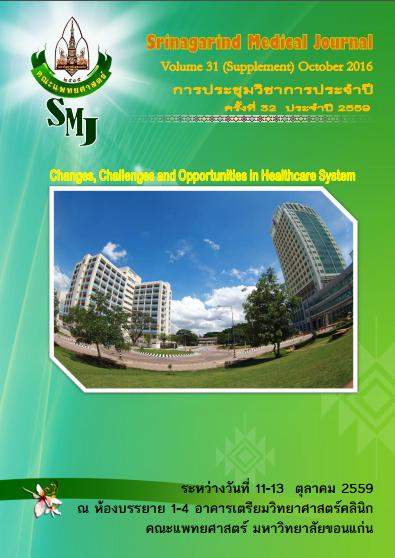Treatment outcomes of Infectious Endophthalmitis in Northeastern Thailand
Abstract
Objecetive:This study aimed to evaluate treatment outcome of infectious endophthalmitis during 2011-2015 at a large referral eye center in Northeastern Thailand.
Methods: Medical charts of patients with diagnosis of infectious endophthalmitis including demographic data, types of endophthalmitis, causative organisms, methods of treatment, anatomical outcome and functional outcome were reviewed. Factors associated with the visual outcome were also analyzed
Results: Four hundred and eleven patients (417 eyes) were recruited in this study. The three most common types were post-traumatic (44.53%), post-operative (31.87%) and endogenous endophthalmitis (17.52%). Vitreous culture revealed causative organisms in 41.36%. Most common gram-positive organisms were coagulase negative Staphylococcus 27.11% (32/118), Bacillus spp.20.33% (24/118) and beta hemolytic Streptococcus 10.17% (12/118). Most common gram-negative were Pseudomonas spp. 24.32% (9/37), Klebsiella spp. 21.62 % (8/37) and Enterobacter spp. 16.21% (6/37). Methods of treatment were medical treatment (18.73%) and surgical (81.30%) including pars plana vitrectomy (62.6%) and destructive surgery (18.70%). After treatment, visual improvement were noted in 54.86%, stable vision in 22.71% and worse in 17.10%. Factors associated with visual outcome were types of endophthalmitis and initial visual acuity before treatment.
Conclusions : Most endophthalmitis patients were post-traumatic, post-operative and endogenous. The most common method of treatment was pars plana vitrectomy. Visual improvement was noted in 54.86%. Factors associated with visual outcome were types of endophthalmitis and initial visual acuity before treatment.




